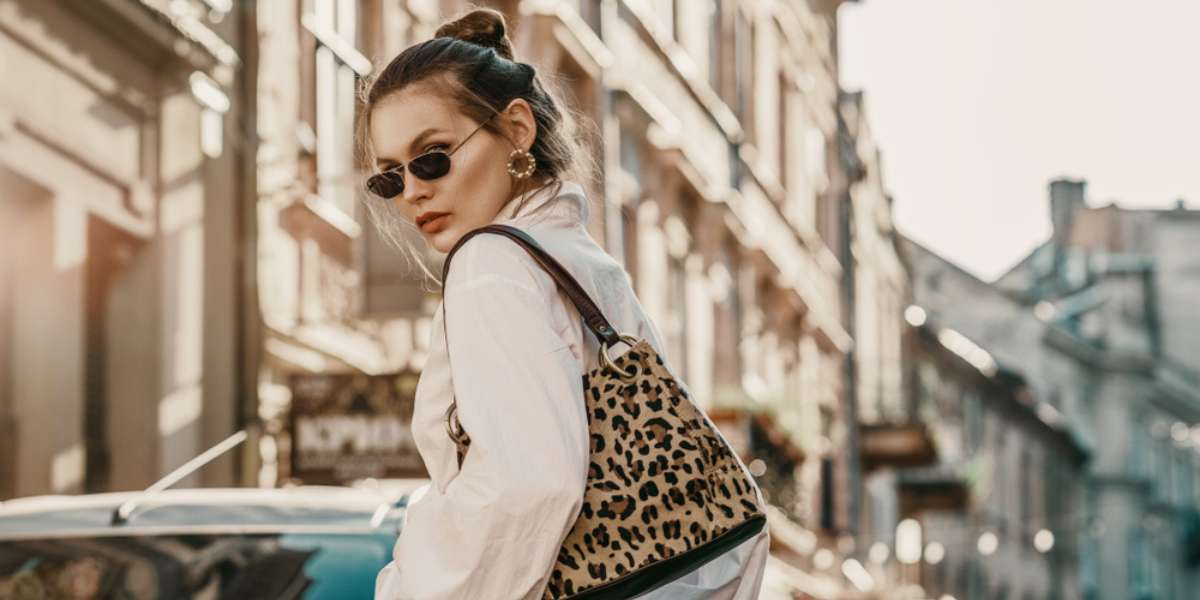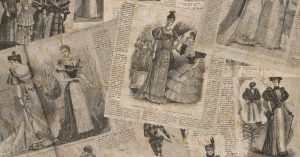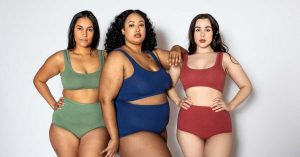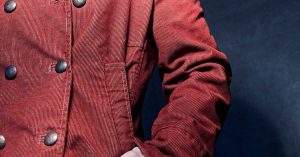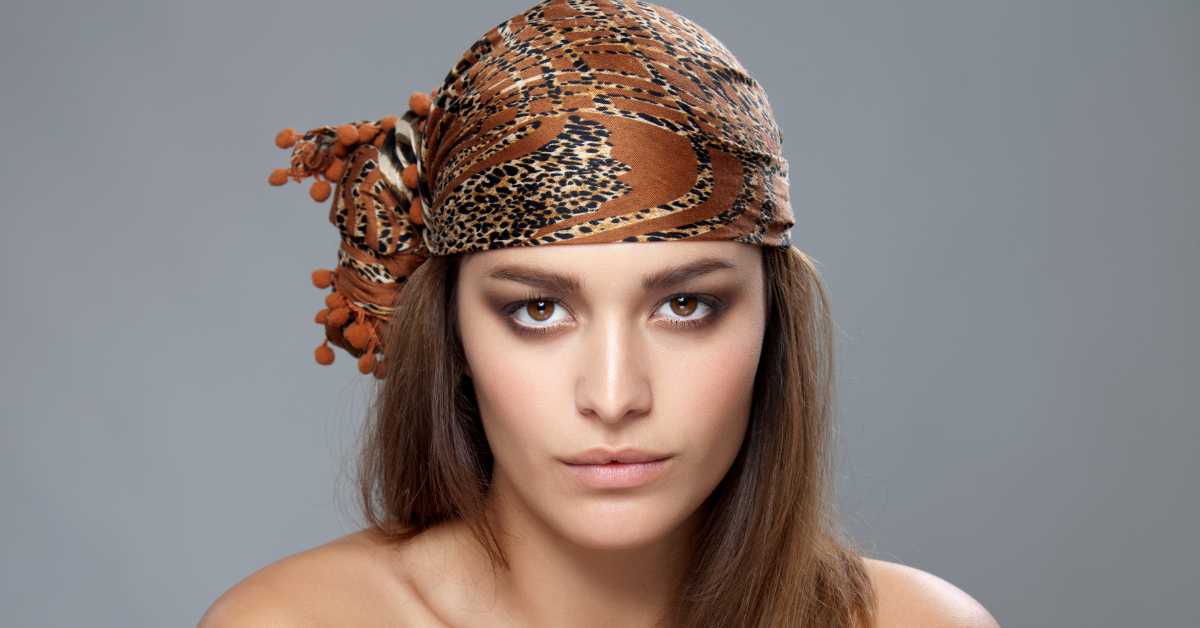In our fast-paced world, clothing choices may seem trivial, but they hold a remarkable power over our lives. Welcome to the intriguing realm of fashion psychology, where we unravel the profound connection between what we wear and how we feel.
From the vibrant hues we choose to the comforting embrace of our favorite sweater, our clothing decisions influence our daily experiences in ways we might not even be aware of. In this blog, we’ll dive into the captivating world of fashion psychology, exploring how our choices of attire impact our emotions, self-esteem, and overall well-being.
So, get ready to embark on a journey that uncovers the hidden significance of clothing in our lives. We’ll delve into the psychology behind our fashion choices, examine the mood-altering power of colors, and even discuss how dressing for success can boost your confidence. By the end of this exploration, you’ll have a newfound appreciation for the role clothing plays in our daily existence.
The Psychology Behind Clothing Choices
Our choice of clothing goes beyond mere fabric and fashion trends; it is a complex interplay of psychological factors. At the core of this intricate dance lies the desire for self-expression. We use our clothing as a canvas to convey our personalities, beliefs, and emotions.
Clothing is a language, and every outfit tells a story. It’s the reason why we have a favorite t-shirt, the one that instantly boosts our mood, or the power suit that transforms us into confident professionals. Fashion psychology recognizes that clothing serves as a tool for self-expression, allowing us to communicate our identity to the world without uttering a word.
Think about it – the rebel dons leather jackets adorned with patches, while the eco-conscious soul opts for sustainable materials. These choices are conscious or subconscious reflections of their inner selves. Our wardrobes are, in essence, an extension of our identities.
Now, let’s delve into a fascinating aspect of fashion psychology: how our clothing influences our self-perception and confidence. Picture this scenario – you’re wearing a perfectly tailored suit or an elegant dress that hugs your curves just right. Suddenly, you stand a little taller, walk with more purpose, and exude confidence effortlessly.
The clothing we wear has the power to reshape our self-image. It’s why psychologists refer to this phenomenon as “enclothed cognition.” When we dress in a certain way, we tend to adopt the traits associated with that style. This could mean feeling more authoritative in formal attire or more relaxed and approachable in casual wear.
So, as you stand in front of your wardrobe each morning, remember that your clothing choices are more than aesthetics; they are reflections of your inner world and have the remarkable ability to influence how you perceive yourself and how the world perceives you. In the next sections, we’ll dive deeper into the psychology of color and the confidence-boosting magic of mindful dressing.
The Mood-Boosting Power of Colors
Colors are an integral part of our daily lives, and they wield significant influence over our emotions and perceptions. When it comes to fashion psychology, the role of color is particularly fascinating.
Colors have the power to evoke emotions, conjure memories, and create atmospheres. Psychologists have long studied the psychological effects of color, and these findings extend into the realm of fashion.
Have you ever noticed how a particular color can brighten your day or calm your nerves? This phenomenon is a result of color psychology, a field that explores how different colors can affect human emotions and behaviors.
Examples of Colors and Their Associated Emotions
Here are some examples of colors and the emotions they often evoke:
- Red: This fiery hue is often associated with passion, love, and energy. It can boost confidence and evoke strong emotions. Red dresses, for instance, are classic choices for romantic evenings.
- Blue: Blue is known for its calming and soothing effects. It’s often associated with tranquility, trust, and dependability. A crisp blue shirt or a serene blue dress can evoke a sense of calm.
- Yellow: Yellow exudes warmth and optimism. It’s the color of sunshine and happiness. Wearing yellow can lift your spirits and bring a smile to your face.
- Green: Green symbolizes growth, nature, and harmony. It’s a refreshing color that can evoke feelings of balance and renewal. A green outfit can help you feel grounded and connected to the natural world.
- Black: Black is often linked to sophistication, mystery, and power. It’s a versatile color that can make you feel confident and elegant, whether you’re wearing a little black dress or a sharp black suit.
- Pink: Pink represents sweetness, playfulness, and affection. It’s a color often associated with love and romance. Wearing pink can help you feel more compassionate and loving.
- Purple: Purple combines the energy of red and the calm of blue. It’s associated with creativity, luxury, and spirituality. Donning purple attire can inspire creativity and a sense of regal elegance.
Understanding the psychological impact of colors allows you to make intentional choices when selecting your outfits. Depending on your mood and the message you want to convey, you can harness the power of color to enhance your emotional well-being and create a lasting impression. In the next section, we’ll explore how clothing choices can boost confidence and self-assuredness.
Dressing for Success: The Confidence Connection
Clothing choices hold remarkable power over our self-confidence and the image we project to the world. In the realm of fashion psychology, understanding how attire affects self-assuredness is a fascinating journey.
It’s no secret that what we wear can significantly impact how we feel about ourselves. When we put on an outfit that makes us feel good, our confidence soars. Conversely, an ill-fitting or mismatched ensemble can deflate our self-esteem.
“Power dressing” is a term that emerged in the 1980s, highlighting the idea that certain clothing choices can convey authority, competence, and confidence. This concept suggests that clothing is not merely a physical covering but a tool for psychological empowerment.
Power dressing often involves tailored, structured, and polished attire. When individuals embrace power dressing, they often report feeling more in control, assertive, and capable. This psychological boost can be especially valuable in professional settings, where confidence is a key asset.
Tips for Boosting Self-Assuredness through Fashion
Harnessing the psychological effects of clothing to boost self-confidence is both an art and a science. Here are some tips to help you use fashion as a tool for enhancing self-assuredness:
- Wear Well-Fitted Clothing: Clothing that fits you perfectly can make you feel more confident and put-together. Invest in tailoring to ensure your garments flatter your body shape.
- Choose Colors Wisely: As discussed earlier, colors can evoke emotions. Select colors that align with your goals and the message you want to convey.
- Embrace Your Style: Dress in a way that aligns with your personal style. When you feel authentic in your clothing choices, it’s easier to exude confidence.
- Pay Attention to Grooming: Personal grooming, including hairstyle and grooming habits, plays a role in self-assuredness. Well-groomed individuals often feel more confident.
- Mindful Accessories: Thoughtful accessorizing can elevate your confidence. A statement piece of jewelry or a well-chosen tie can make a significant difference.
- Posture Matters: Stand tall and maintain good posture. How you carry yourself is an essential element of projecting confidence.
- Practice Makes Perfect: Experiment with different outfits and styles to understand what makes you feel most confident. Over time, you’ll develop a keen sense of your fashion identity.
- Be Mindful of the Occasion: Dress appropriately for the occasion. When you’re dressed in line with the event’s expectations, you’ll naturally feel more confident.
By using fashion as a tool to enhance self-assuredness, you can navigate both personal and professional challenges with greater confidence and resilience. In the next section, we’ll explore the intriguing nexus between clothing comfort and confidence.
The Comfort-Confidence Nexus
The relationship between clothing comfort and confidence is a subtle but significant facet of fashion psychology. When you’re at ease in what you’re wearing, it can have a profound impact on how you carry yourself and your overall self-assuredness.
Imagine slipping into your favorite pair of well-worn jeans or wearing a cozy sweater on a crisp autumn day. These moments of sartorial comfort have a unique way of boosting confidence. When you’re comfortable, you’re more relaxed and at ease, which in turn positively affects your self-perception.
Comfortable clothing can act as a sort of psychological armor, shielding you from unnecessary distractions and discomfort. When your clothing isn’t binding, too tight, or constricting, your mind can focus on the task at hand, whether it’s a high-stakes presentation or a social gathering.
The psychological effects of comfortable clothing can vary across situations. In a professional setting, comfort can translate to a greater sense of control and competence. You’re less likely to be distracted by the itch of a too-tight collar or the discomfort of pinching shoes, allowing you to concentrate on your work and interactions.
In social contexts, comfortable attire can promote a relaxed and approachable demeanor. When you’re not fidgeting or constantly adjusting your outfit, you’re more open to engaging in meaningful conversations and forging connections.
While comfort is key, it doesn’t mean sacrificing style. In fact, the intersection of comfort and style is where optimal confidence often resides. Here are some strategies to strike that balance:
- Prioritize Fabric Quality: Invest in clothing made from high-quality, breathable fabrics. These pieces often offer both comfort and style.
- Tailor for Fit: Tailoring can make even formal attire incredibly comfortable. When clothing fits well, it enhances comfort and style.
- Layer Thoughtfully: Layering allows you to adapt to varying temperatures and settings without compromising comfort or style.
- Footwear Matters: Opt for comfortable yet stylish footwear. Brands now offer options that merge the two seamlessly.
- Accessories for Flair: Use accessories to infuse your style into an outfit while keeping comfort at the forefront.
- Know Your Style: Understanding your style preferences is crucial. It helps you select clothing that resonates with your comfort and confidence.
In essence, the interplay between clothing comfort and confidence is a subtle dance, one where comfort acts as the foundation upon which style and self-assuredness can flourish. In the following section, we delve into the role of societal and cultural factors in shaping our clothing choices.
The Impact of Social and Cultural Factors
Our clothing choices are not made in isolation; they are deeply entwined with the fabric of societal and cultural norms. These norms, often unspoken but powerfully present, can subtly influence the garments we select and how we wear them.
Societal norms dictate the accepted standards of dress within a given culture or community. These norms can encompass a wide range of considerations, from modesty and appropriateness to formality and professionalism.
When it comes to societal norms and clothing, the psychology of conformity and rebellion often emerges. Some individuals find comfort and security in adhering to established norms. For them, following the prescribed dress code in a particular context can provide a sense of belonging and acceptance.
On the flip side, others might feel compelled to challenge these norms. This defiance of established dress codes can be an expression of individuality and a statement of non-conformity.
Cultural background plays a significant role in shaping fashion preferences. It’s a complex interplay where tradition, history, climate, and values converge to create a unique sartorial identity for each culture.
Examples of Cultural Influence on Fashion
Let’s consider some examples of how cultural background shapes fashion:
- Traditional Dress: In many cultures, traditional clothing is worn to preserve heritage and customs. For instance, the kimono in Japan, the saree in India, or the kilt in Scotland all serve as powerful symbols of cultural identity.
- Religious Attire: Religiously influenced clothing, such as the hijab in Islam or the yarmulke in Judaism, represents adherence to faith-based norms and values.
- Climate-Driven Styles: In regions with extreme climates, clothing is adapted for practicality. In the Middle East, flowing and lightweight garments provide relief from heat, while in colder climates like Scandinavia, heavy, insulating clothing is favored.
- Globalization and Fusion: In today’s interconnected world, fashion often transcends borders. Cultural fusion, where elements of one culture’s dress merge with another’s, results in unique, hybrid styles.
In Canada, for instance, a country known for its rich cultural diversity and extreme weather conditions, fashion reflects a unique blend of influences. From the traditional clothing of Indigenous peoples to the multicultural tapestry woven by waves of immigration, Canadian fashion naturally celebrates diversity.
The influence of societal and cultural factors on clothing choices is a fascinating facet of fashion psychology. In the next section, we’ll explore real-life case studies that showcase the profound impact of clothing on mood and self-perception.
Case Studies: Real-Life Examples
To truly understand the psychological influence of clothing on mood and confidence, let’s delve into the stories of individuals whose lives were notably affected by their fashion choices, including some in the vibrant backdrop of Canadian fashion culture.
Case Study 1: Embracing Identity Through Fashion in Canada
In the multicultural landscape of Canada, fashion becomes a powerful tool for self-expression and identity. Meet Sarah, a young woman who immigrated to Canada from South Asia. Initially, Sarah found herself navigating a complex blend of cultures and identities. She often felt torn between preserving her heritage and assimilating into Canadian society. However, through the fashion choices she made, Sarah found a way to bridge these worlds.
By blending traditional South Asian clothing with modern Canadian fashion, she created a style uniquely her own. The vibrant colors and intricate patterns of her heritage coexisted harmoniously with contemporary Canadian attire. As she walked the streets of Toronto, her clothing told a story of cultural pride and integration. Sarah’s fashion choices became a source of empowerment, allowing her to embrace her identity and share her heritage with others. Her newfound confidence was palpable, illustrating how fashion can serve as a bridge between cultures and a catalyst for personal growth.
Case Study 2: The Power of Professional Attire
In the corporate realm of Vancouver, fashion choices can significantly impact one’s career. Mark, a young professional, initially struggled with self-confidence when transitioning from a university student to a business analyst. He recognized the need to project competence and authority through his appearance but wasn’t sure where to start.
Upon seeking advice from a fashion consultant in Vancouver, Mark underwent a transformation in both his wardrobe and self-assurance. By adopting the principles of “power dressing” and investing in high-quality, tailored suits, he not only looked the part but began to feel it too. The tailored suits provided a sense of armor, boosting his confidence during meetings and presentations. Mark’s newfound self-assuredness didn’t go unnoticed; his superiors and colleagues began to perceive him as a more capable and authoritative professional.
Lessons and Insights
These real-life case studies underscore the profound influence of clothing on mood and confidence. In Sarah’s case, fashion became a bridge that allowed her to reconcile her cultural identity with her life in Canada. Mark’s journey illustrates how the right attire can empower individuals in the professional sphere. These stories highlight the importance of mindful dressing and the potential for fashion to serve as a tool for self-expression, empowerment, and personal growth.
Fashion in Canada, with its rich tapestry of cultural influences, naturally provides a unique backdrop for such transformative experiences. Now that we’ve explored the real-world impact of clothing choices, let’s delve into the concept of mindful dressing and how it can enhance both mood and self-perception.
The Art of Mindful Dressing
Mindful dressing is an art that involves making intentional clothing choices with a keen awareness of their impact on our emotions and self-perception. In the vibrant fashion landscape of Canada, where diverse cultures and lifestyles intersect, practicing mindful dressing can be especially empowering. Here, we’ll delve into what mindful dressing entails and how it can elevate your mood and self-confidence.
At its core, mindful dressing is about connecting your inner self with your outward appearance. It’s a practice that encourages you to consider not only the aesthetics of your clothing but also the emotions and energies they evoke. This approach recognizes that clothing is not merely a facade; it’s a canvas for self-expression and a tool for influencing how we feel and interact with the world.
Practical Tips for Mindful Dressing
- Start Your Day Mindfully: Begin each morning with a few moments of reflection. Ask yourself how you want to feel today. Whether it’s confident, creative, or comfortable, let that emotion guide your clothing choices.
- Color Psychology: Pay attention to the colors you wear. Different hues can evoke specific emotions. For instance, blue can convey calmness and trust, while red exudes energy and passion. Experiment with colors that resonate with your desired mood.
- Comfort is Key: Prioritize comfort without compromising style. Clothing that feels good on your skin can boost your confidence and overall mood. In the chilly Canadian winters, cozy yet stylish layers can keep you warm and upbeat.
- Wardrobe Edit: Regularly declutter your wardrobe. Keep items that align with your style and mood-enhancing goals. Donate or repurpose clothing that no longer serves you.
- Accessorize with Intent: Accessories can be mood enhancers. A statement necklace or a pair of bold earrings can elevate your spirits and add a touch of personality to your outfit.
- Experiment and Express: Don’t be afraid to experiment. Canadian fashion is all about celebrating diversity and individuality. Embrace unique pieces that resonate with your true self and mood aspirations.
- Dress for the Occasion: Tailor your outfit to the context of your day. Dressing appropriately can enhance your confidence and comfort in various situations.
Fashion in Canada, with its fusion of cultures and styles, naturally encourages experimentation and individuality. Whether you’re strolling through Vancouver, exploring the art scene in Toronto, or braving the winter chill in Calgary, your clothing choices can be an extension of your mood and personality.
So, embrace the canvas of mindful dressing. Let your clothing reflect your emotions, aspirations, and inner strength. In the world of Canadian fashion, where diversity and creativity flourish, you have the opportunity to curate a wardrobe that not only aligns with your mood but also celebrates your unique identity. With mindful dressing, each day becomes a canvas to express and enhance your beautiful self.
In conclusion, this exploration of fashion psychology unveils the profound connection between our clothing choices, mood, and self-perception. It emphasizes that what we wear goes far beyond aesthetics, influencing how we feel and perceive ourselves. Colors, styles, and comfort all play a vital role in shaping our emotions and confidence. By adopting mindful dressing practices, we can harness this transformative power of fashion to our advantage. It’s an invitation to embark on a journey of self-discovery through clothing, to intentionally select outfits that align with our emotions and aspirations. As we navigate the vibrant landscape of Canadian fashion, we’re encouraged to experiment, express our uniqueness, and embrace the rich tapestry of cultures and styles. Ultimately, fashion psychology serves as a powerful tool for personal growth and well-being, allowing us to craft not just outfits but also a positive and empowered sense of self.

